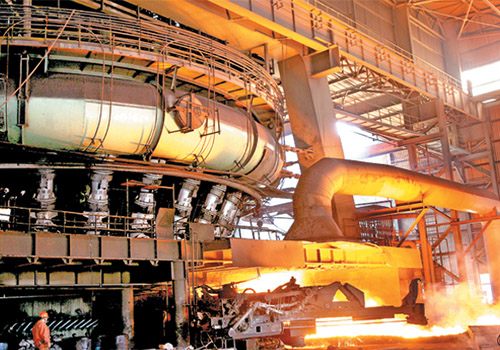

2021/01/14
3339
The oxygen blast furnace (OBF) of Baosteel Group Xinjiang Bayi Iron & Steel Co., Ltd. (hereinafter referred to as Bayi Iron & Steel), which opened on July 15, 2020, has made ground-breaking progress in the first phase of its industrial experiment early this year. The blast oxygen content has reached 35%, marking that with the first OBF entering the industrial test stage worldwide, Bayi Iron & Steel has breached the limit of the global traditional BF oxygen enrichment rate.
Using 100% oxygen instead of hot blast leads to significantly reduced carbon dioxide emissions and greatly improved production efficiency compared with the traditional blast furnace process. At present, the modified oxygen blast furnace can reduce carbon emissions by over 40% and increase production capacity by about 40%. The technical problem of unbalanced furnace temperature has also been overcome while realizing highly oxygen-enriched smelting at the same time.
Since the OBF blow-in, against the technical bottleneck of the oxygen-enrichment limit of traditional blast furnaces, the technical team has carried out series of technological innovations and researches, and continuously broken through and refreshed the traditional BF oxygen enrichment rate. During this period, researches on the coal injection ratio were also stepped up, as a result, the coal rate exceeded 200kg/t, and the daily coal injection rate reached 230kg/t, which both have broken the coal injection limit of traditional blast furnaces of the same type. In addition, the BFG can be recycled after decarbonization and emissions can be reduced by more than 50%, which is another huge breakthrough for the ironmaking process.

Oxygen Blast Furnace of China’s Steel Mill Achieves 35% Enriched-Oxygen Smelting
After start-up, the oxygen blast furnace will complete the conventional operations such as iron & slag tapping, furnace temperature raising, silicon content reduction, etc. Through those processes, technicians will conduct industrial low-carbon metallurgical experiments with different oxygen and reactant ratios as planned, which truly opened the way for industrial production of low-carbon and high oxygen-enriched metallurgy in the world.
The OBF industrial experiment was divided into two stages. The first phase was planned to take 3-4 months to push the boundaries of the oxygen enrichment rate of traditional blast furnaces and achieve the high 35% oxygen-rich smelting. In the second stage, CO2 removal technology will be introduced to get through the OBF gas circulation process and achieve 50% ultra-high oxygen enrichment within another 3-4 months. Consequently, the next step is to advance toward the 50% oxygen-enriched smelting target in the second stage to finally achieve the full oxygen smelting. Furthermore, hydrogen-enriched smelting will also be actively promoted.
(Source: Bayi Iron & Steel, China Metallurgical News)